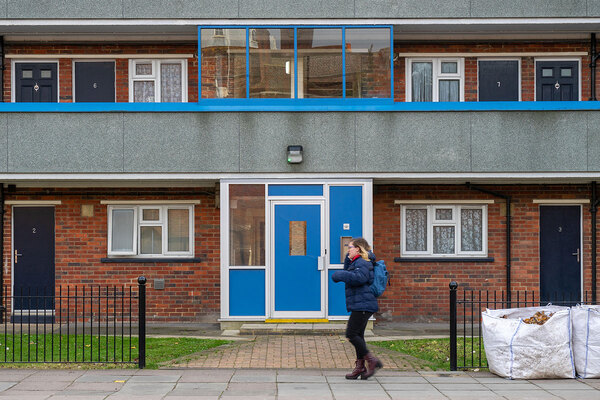You are viewing 1 of your 1 free articles
Behind the numbers: what impacts have legal aid cuts had on housing?
An investigation by Inside Housing has revealed the massive impact cuts to legal aid have had on the housing sector. Lucie Heath unpicks the data and outlines why so many tenants are being denied access to justice
In April 2013, the Legal Aid, Sentencing and Punishment of Offenders Act (LASPO) came into force in the UK. The act introduced by Chris Grayling, then justice secretary, led to wide-ranging cuts to legal aid and dramatically reduced the number of housing-related cases eligible for financial support.
The impact on tenants and landlords has been huge.
Exclusive data obtained by Inside Housing, and published today, revealed that the number of housing legal cases funded by the Legal Aid Agency has fallen by almost 40% in a decade.
However, this headline number doesn’t tell the full story.
Certain types of housing-related cases have been hit much harder than others. Further cuts post-2013 have also helped to fuel the decline.
Here, Inside Housing breaks down the data it has obtained alongside other government-published data, to understand better what impact the LASPO cuts have had seven years on.
Click replay to play the animation from the start
It is clear from this graph that the decline in the number of cases being granted legal aid funding is driven by a decline in the number of people applying for legal aid on housing-related issues.
In 2010/11, 14,401 applications for civil representation in housing-related cases were submitted. This fell by 45% to 7,963 in 2018/19.
Some would argue that it is unsurprising that the introduction of LASPO led to a decline in applications, as many cases fell out of the scope of legal aid. However, this graph shows that there was not a sudden drop-off when the act came into force in 2013. Instead, the reduction in applications has been more gradual over time.
The reasons for this can be explained by breaking down the data further.
Click replay to play the animation from the start
Disrepair cases can be brought forward by a tenant when they are living in poor housing conditions, however rule changes following LASPO mean tenants must now be able to prove there is a serious risk of harm to their health and safety.
Derek Bernardi, a solicitor-advocate at Camden Community Law Centre, told Inside Housing that “one of the biggest obstacles” his firm now faces when bringing forward disrepair cases is getting the correct medical evidence from GPs, for example when a client is suffering from symptoms related to mould.
The high benchmark set by the Legal Aid Agency means the number of cases submitted has fallen by 92% since 2010, while the number of cases accepted has fallen by 94%.
Click replay to play the animation from the start
When looking at the number of applications for judicial review cases, which challenge decisions made by local authorities, it is clear there is more to the story than LASPO.
While LASPO may explain the first dip in funding, the second dip, following 2015, is likely caused by a separate move by the Legal Aid Agency.
In March 2015, new government regulations meant payment for work on an application for judicial review would only be given if a court granted permission to bring the case forward.
Jo Underwood, head of strategic litigation at Shelter, said the new rules mean “practitioners are doing huge amounts of work at risk of not being paid for anything”.
“It’s just too big a piece of work to be able to do regularly at risk,” she added.
Mr Bernardi, who is in the process of bringing forward a judicial review case challenging Camden Council on its social housing allocations policy, explained the application process costs hundreds of pounds and often includes instructing a barrister.
“You then might be out of pocket for all of that,” he said.
Aside from taking a large number of housing-related cases out of scope, a further consequence of LASPO and other cuts has been the creation of ‘housing advice deserts’.
Ms Underwood explains that as cases were brought out of scope by LASPO, practices providing legal aid providers and legal aid lawyers have found it increasingly difficult to sustain their practices. As a result, many have now gone out of business, leaving large swathes of the country without providers.
An analysis of the government’s list of legal aid providers, carried out by Inside Housing, found that 175 (52%) of the district and unitary authorities in England and Wales did not have any legal aid providers within their boundaries. Meanwhile, London had 224 (49%) of the country’s 455 providers.
Ms Underwood said: “Outside London, travel times and public transport make it incredibly difficult for people to cross their borough or district and find the legal aid service.”
She added: “The other thing we’ve noticed is that post-LASPO, when housing advice deserts were created, there’s nobody in those areas to hold local authorities to account.
“Anecdotally we see that when there are no lawyers and advisors to hold an authority or a public body to account in an area, then systemic failures and bad practices thrive.”












